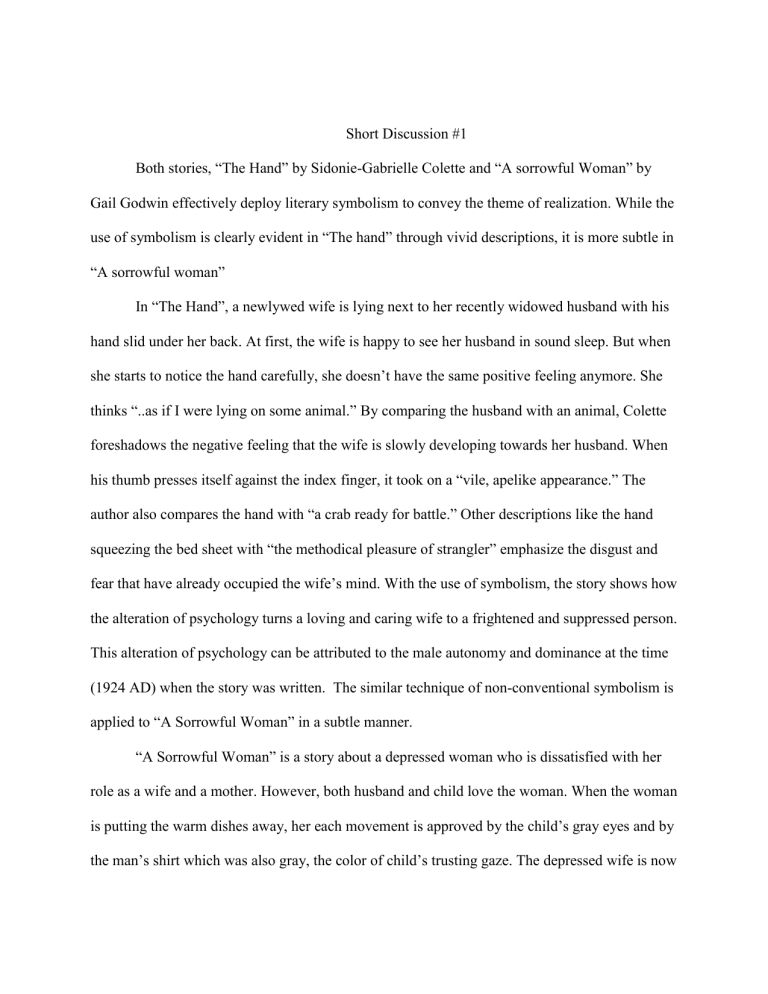
Short Discussion #1 Both stories, “The Hand” by Sidonie-Gabrielle Colette and “A sorrowful Woman” by Gail Godwin effectively deploy literary symbolism to convey the theme of realization. While the use of symbolism is clearly evident in “The hand” through vivid descriptions, it is more subtle in “A sorrowful woman” In “The Hand”, a newlywed wife is lying next to her recently widowed husband with his hand slid under her back. At first, the wife is happy to see her husband in sound sleep. But when she starts to notice the hand carefully, she doesn’t have the same positive feeling anymore. She thinks “..as if I were lying on some animal.” By comparing the husband with an animal, Colette foreshadows the negative feeling that the wife is slowly developing towards her husband. When his thumb presses itself against the index finger, it took on a “vile, apelike appearance.” The author also compares the hand with “a crab ready for battle.” Other descriptions like the hand squeezing the bed sheet with “the methodical pleasure of strangler” emphasize the disgust and fear that have already occupied the wife’s mind. With the use of symbolism, the story shows how the alteration of psychology turns a loving and caring wife to a frightened and suppressed person. This alteration of psychology can be attributed to the male autonomy and dominance at the time (1924 AD) when the story was written. The similar technique of non-conventional symbolism is applied to “A Sorrowful Woman” in a subtle manner. “A Sorrowful Woman” is a story about a depressed woman who is dissatisfied with her role as a wife and a mother. However, both husband and child love the woman. When the woman is putting the warm dishes away, her each movement is approved by the child’s gray eyes and by the man’s shirt which was also gray, the color of child’s trusting gaze. The depressed wife is now so much fed up with her daily routine of household works that she needs someone else to fulfill her role. After her husband takes that role, she becomes “a young queen, a virgin in a tower.” However, her lack of compassion for her husband and lack of love for the child have been symbolized by the shorter love notes from the husband and no drawing from the boy that used to be slipped under her door every evening. When she goes to kitchen the next day, she sees new dish towels which symbolize the hard work his husband has been doing for the family. This leads the woman to realize that she has not been a good wife and a mother. Finally, before committing suicide, she reciprocates the love of her family. This is symbolized by the delicious supper, same gray-colored hand-knitted sweaters and watercolor paintings prepared by the wife. Thus, both stories use symbolism to convey their respective themes. The only difference is the way it is expressed.




